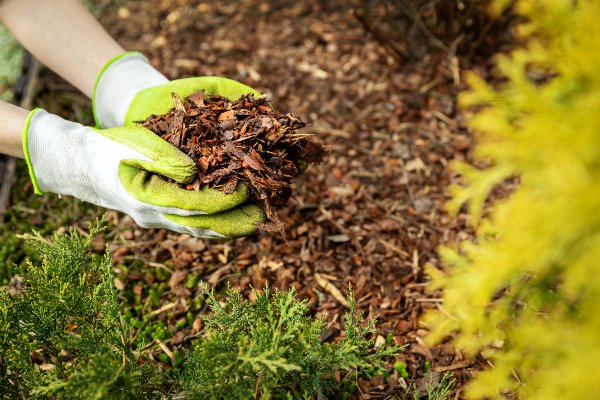Healthy soil is the foundation of a thriving garden. Whether you’re growing vegetables, flowers, or ornamental plants, fertile soil provides the nutrients, structure, and microbial life that roots need to grow strong and productive. But soil doesn’t stay rich forever — it needs care, nourishment, and regular attention.
In this guide, you’ll discover practical, sustainable tips for keeping your garden soil fertile year after year.
Why Soil Fertility Matters
Fertile soil does more than feed your plants. It:
- Retains moisture efficiently
- Supports beneficial microbes and earthworms
- Reduces the need for chemical fertilizers
- Builds plant resistance to pests and disease
- Enhances root development and productivity
Neglecting soil health can lead to weak plants, low yields, and increased maintenance.
1. Add Organic Matter Regularly
The #1 rule of fertile soil: feed the soil, not just the plants. Organic matter improves structure, water retention, and microbial life.
Best organic materials include:
- Compost: Homemade or store-bought, it enriches soil with nutrients and microbes.
- Aged manure: From cows, chickens, or horses (must be composted first).
- Leaf mold: Decomposed leaves, great for moisture retention.
- Kitchen scraps: Use in compost, not directly in garden beds.
Add 1–2 inches of compost each season to vegetable beds and borders.
2. Practice Crop Rotation
If you grow vegetables, planting the same crops in the same soil year after year depletes specific nutrients and encourages pests.
How to rotate:
- Group plants by family (e.g., tomatoes, peppers, eggplants = nightshades)
- Rotate them to a new bed every year
- Follow heavy feeders (like corn) with light feeders (like herbs or carrots)
This improves soil balance and reduces disease build-up.
3. Use Cover Crops (Green Manure)
Cover crops are plants grown primarily to protect and enrich the soil between growing seasons.
Popular options:
- Clover
- Alfalfa
- Buckwheat
- Ryegrass
Benefits include:
- Fixing nitrogen in the soil
- Preventing erosion
- Suppressing weeds
- Adding organic matter when turned into the soil
They’re especially useful during fall and winter months.
4. Mulch to Preserve Nutrients
Mulching adds a protective layer over your soil and helps fertility in several ways:
- Prevents nutrient loss from rain erosion
- Retains moisture
- Regulates temperature
- Adds organic matter as it breaks down
Use organic mulches like straw, wood chips, leaves, or grass clippings.
5. Avoid Tilling Too Often
While tilling loosens compact soil, excessive disturbance harms soil structure and kills beneficial microbes and worms.
Instead, try:
- No-dig gardening: Layer compost on top and let nature do the rest
- Gentle loosening: Use a garden fork to aerate without flipping the soil
Less disturbance = better soil health over time.
6. Water Wisely
Overwatering leaches nutrients out of the soil, especially nitrogen. To protect fertility:
- Water deeply and less frequently
- Use drip irrigation or soaker hoses
- Water in the early morning to minimize evaporation
- Add mulch to reduce surface drying
Healthy soil holds water better, but you must manage irrigation carefully.
7. Add Natural Fertilizers
Boost your soil naturally without chemical fertilizers. Some great organic options:
- Worm castings: High in nutrients and beneficial bacteria
- Fish emulsion: Liquid fertilizer rich in nitrogen
- Bone meal: High in phosphorus for root development
- Kelp meal: Contains micronutrients and growth hormones
Always test soil before fertilizing to avoid imbalances.
8. Encourage Microbial Life
Soil is alive — and that’s a good thing. Beneficial microbes help decompose organic matter, fix nitrogen, and suppress harmful pathogens.
How to boost life underground:
- Minimize chemical use
- Apply compost and compost tea
- Keep soil covered (with mulch or plants)
- Avoid compaction from foot traffic
Healthy soil teems with invisible allies.
9. Use Raised Beds or Add Soil Layers
In areas with poor native soil, raised beds give you total control. You can:
- Mix ideal soil blends
- Improve drainage
- Prevent contamination from below
If not using raised beds, add layers of compost or leaf mold seasonally to build fertility from the top down.
10. Test Your Soil Periodically
Every 1–2 years, test your soil’s pH and nutrient levels. This helps you:
- Avoid over-fertilizing
- Adjust soil amendments precisely
- Track long-term health
You can use DIY kits or send samples to an agricultural lab for detailed results.
Build Soil, Build Abundance
Maintaining fertile soil is not a one-time job — it’s an ongoing relationship. By feeding your soil, protecting it, and understanding its needs, you create the foundation for a vibrant, productive garden.
Let the Soil Do the Heavy Lifting
When your soil is rich and healthy, everything else becomes easier. Pests decline. Weeds slow down. Plants flourish. Fertile soil isn’t just about gardening — it’s about working with nature instead of against it.
Agora vou gerar a imagem ultra realista horizontal para este artigo. Em seguida, passarei para o artigo 29.
Here’s a high-quality horizontal image showcasing a lush, fertile garden bed enriched with compost and mulch, capturing the essence of maintaining soil health.

